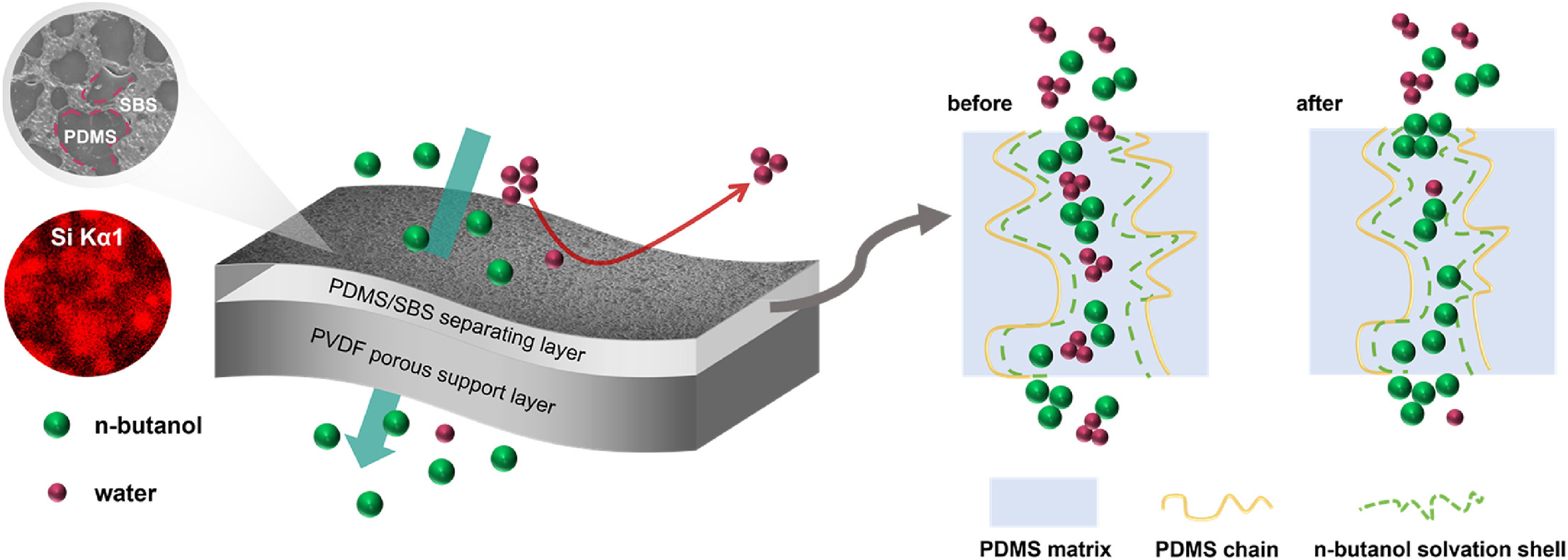Huang Chi
 +
+Date:2018-01-13 Hits:

Impact Factor: 9.5
DOI number: 10.1016/j.memsci.2024.122478
Journal: Journal of Membrane Science
Key Words: Pervaporation;n-Butanol;PDMS;SBS;Phase separation
Abstract: For commercial use, separating membranes need to have outstanding chemical, thermal, and mechanical stability. Moreover, striking a compromise between selectivity and permeability is essential for commercialization. Motivated by the robust and extensible properties of plant cell walls, we develop a strategy to build a cavity cell structure on the surface of the polydimethylsiloxane (PDMS) membrane utilizing a styrene-butadiene-styrene block copolymer (SBS) phase as the “cell wall" to enhance mechanical properties and prevent water permeation to achieve high selectivity. To obtain a controlled split-phase structure, γ-methacryloxy propyl trimethoxyl silane (WD-70) was selected for in situ accommodation of PDMS and SBS. The best results were achieved during the pervaporation separation of 1 wt % n-butanol aqueous solution at 70 °C, with 67.86 μm•kg/(m2•h) flux and an ultra-high separation factor of 73.6, as well as long-term operating stability. All the raw ingredients are affordable and readily available. The synergistic effect of PDMS and SBS mitigated the trade-off effect of the polymer membrane and improved the separation performance.
Co-author: Guo Ning,Sun Li,Hu Mingjie
Indexed by: Journal paper
Correspondence Author: Huang Chi*
Volume: 696
Page Number: 122478
ISSN No.: 0376-7388
Translation or Not: no
Date of Publication: 2024-02-16
Included Journals: SCI
Links to published journals: https://doi.org/10.1016/j.memsci.2024.122478
Copyright @ 2017 Wuhan University